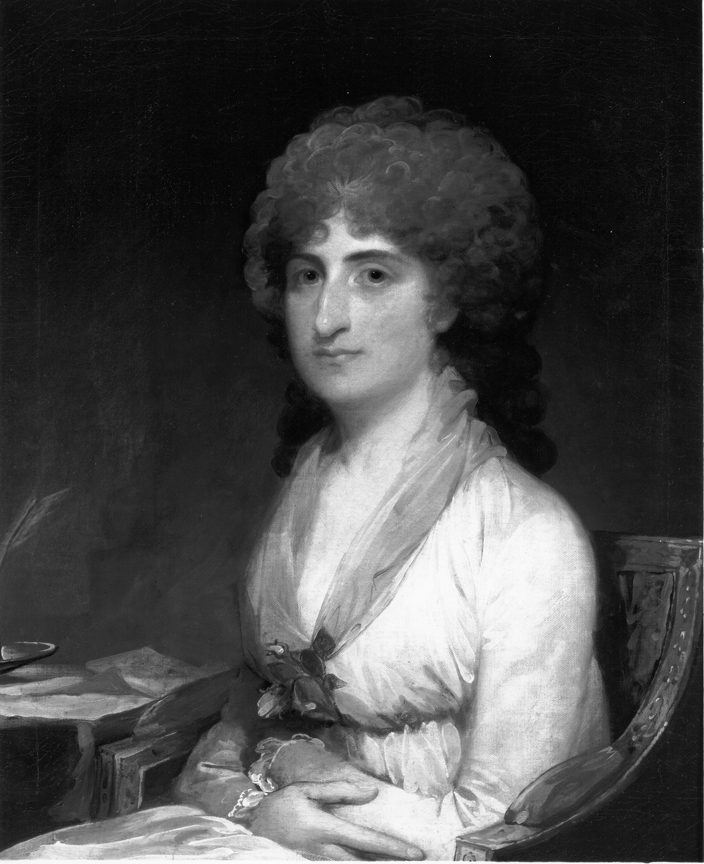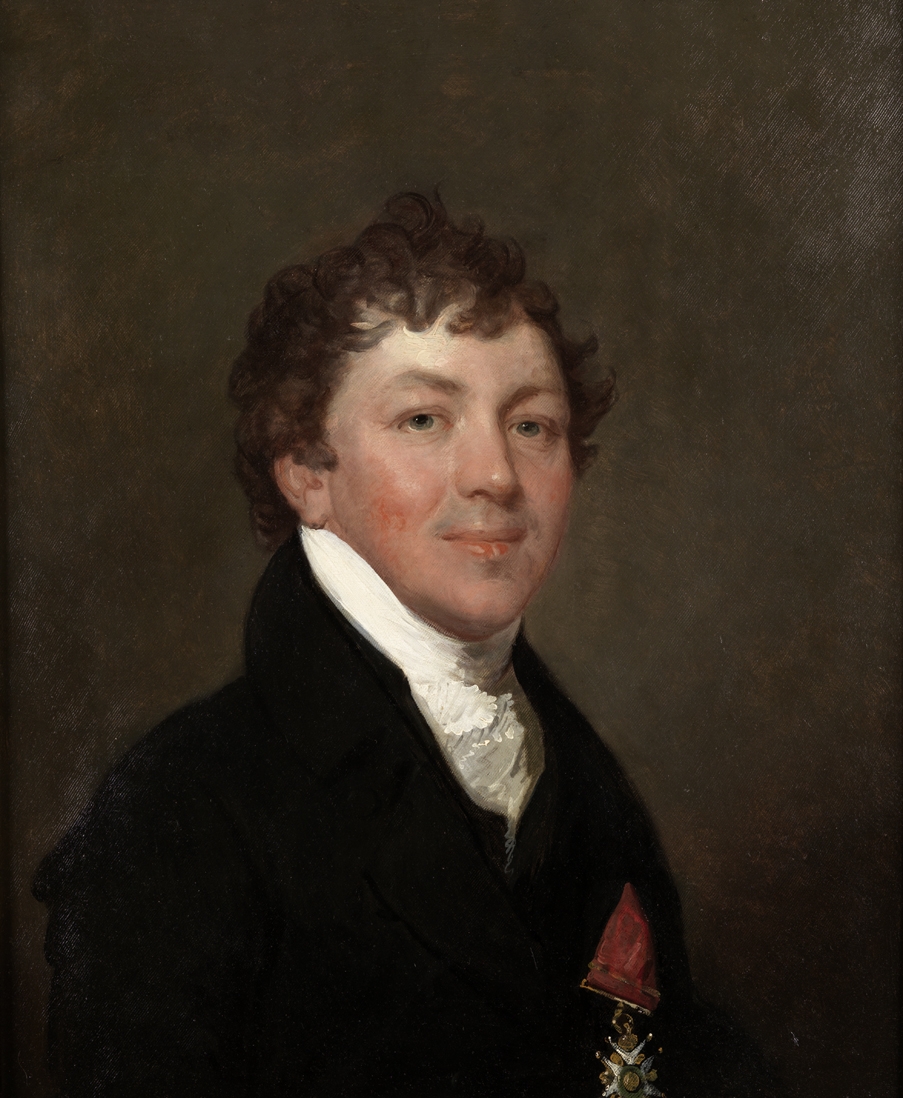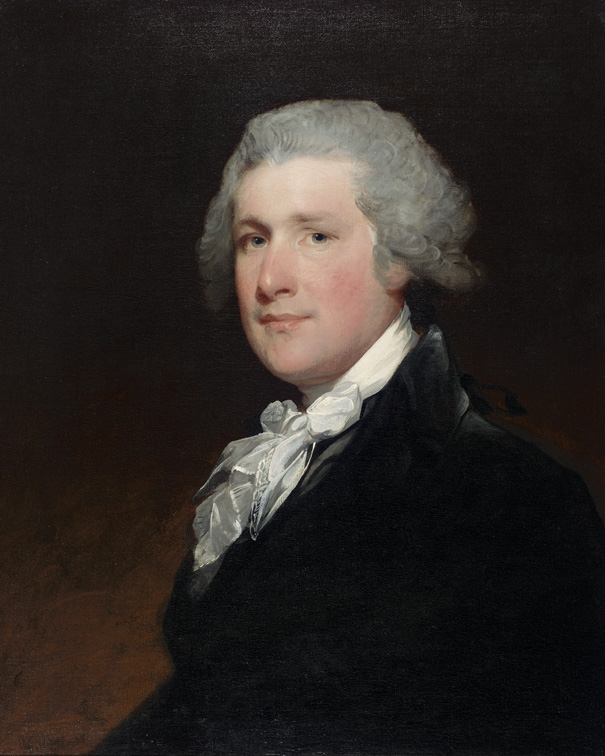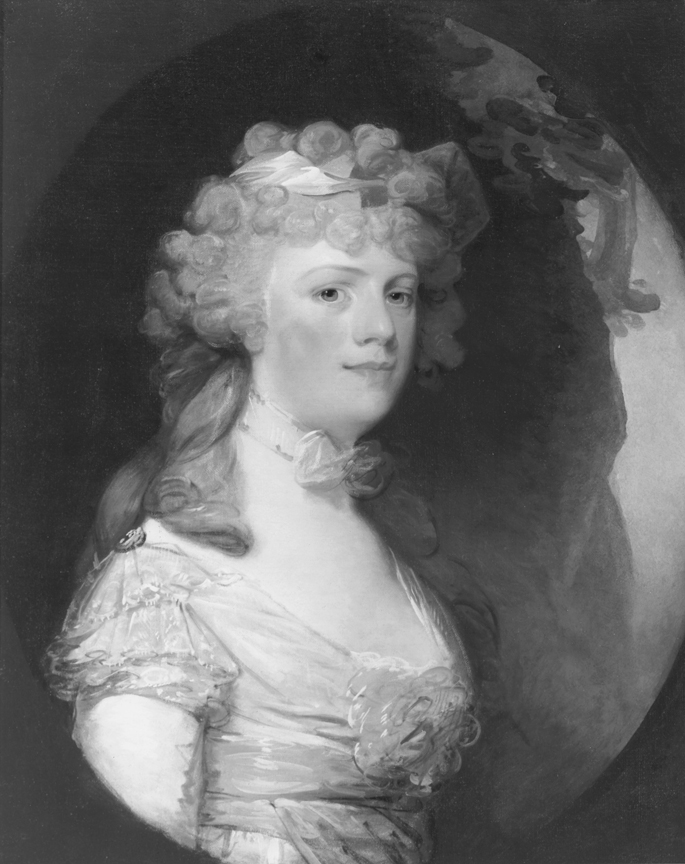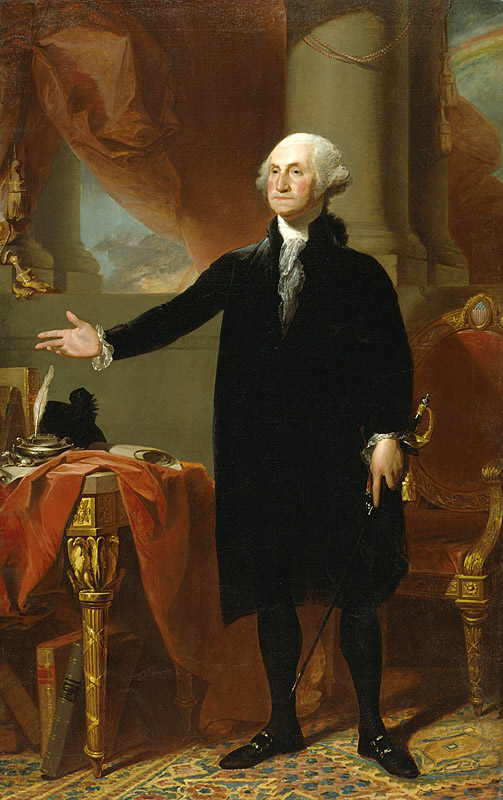
George Washington (The Lansdowne Portrait)
Gilbert Stuart
America’s conception of its first president is largely based on a sequence of enduring portraits by Gilbert Stuart. Washington’s sittings for Stuart in Philadelphia, between 1795 and 1796, resulted in three distinctive images: the “Vaughan” type; the “Athenaeum” head, familiar as the image on the dollar bill; and the “Lansdowne” portrait, named for the Marquise of Lansdowne, former British Prime Minister and recipient of the work. With demand for the images high, Stuart painted many copies of these works; the Academy’s "Lansdowne Portrait" is the original. In this work, Stuart painted only Washington’s head from life (the first president dreaded sitting for painters—especially Stuart), substituting a stand-in to complete the figure.
At the time of this sitting, Washington (1732—1799) was troubled. Besides a new set of badly fitted false teeth, differences in policy between Washington and his cabinet over relations with England had become significant, and elements of the press were portraying Washington as a despotic monarch on par with the King of France. Ironically, Stuart, employing the continental “Grand Manner” style he had learned from Benjamin West, honored Washington by emulating aristocratic portraiture such as Hyacinthe Rigaud’s Louis XIV (1701). Stuart loaded the portrait with allegorical weight, from the rainbow symbolizing peace and prosperity after the storm of the Revolution, to multiple references to Republican Rome (a political model for young America), and the popular depiction of Washington as a new Cincinnatus, the ancient warrior who laid down his arms after establishing peace.
Artist
Date of Birth
(1755-1828)
Date
1796
Medium
Oil on canvas
Dimensions
96 x 60 in. (243.84 x 152.4 cm.)
Accession #
1811.2
Credit Line
The Pennsylvania Academy of the Fine Arts, Bequest of William Bingham
Copyright
No known copyright restrictions
Category
Subject
We're so excited you're planning to visit PAFA!
Make time for art — visit us Thursday to Sunday.
Before reserving your tickets, please review helpful information about museum hours, accessibility, building access, and special admission programs.
If you have any questions, feel free to reach out to us at visitorservices@pafa.org — we’d love to help!
